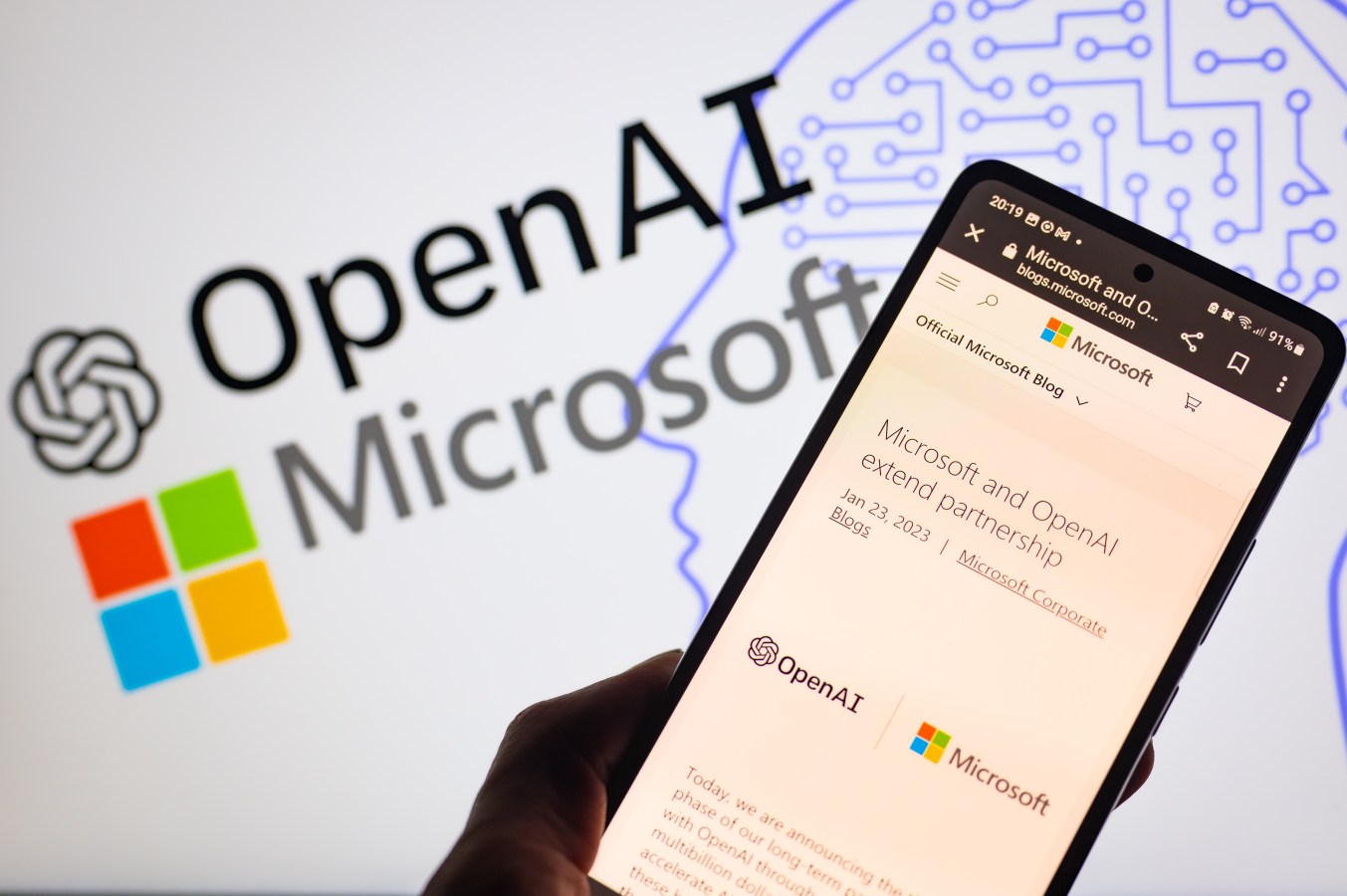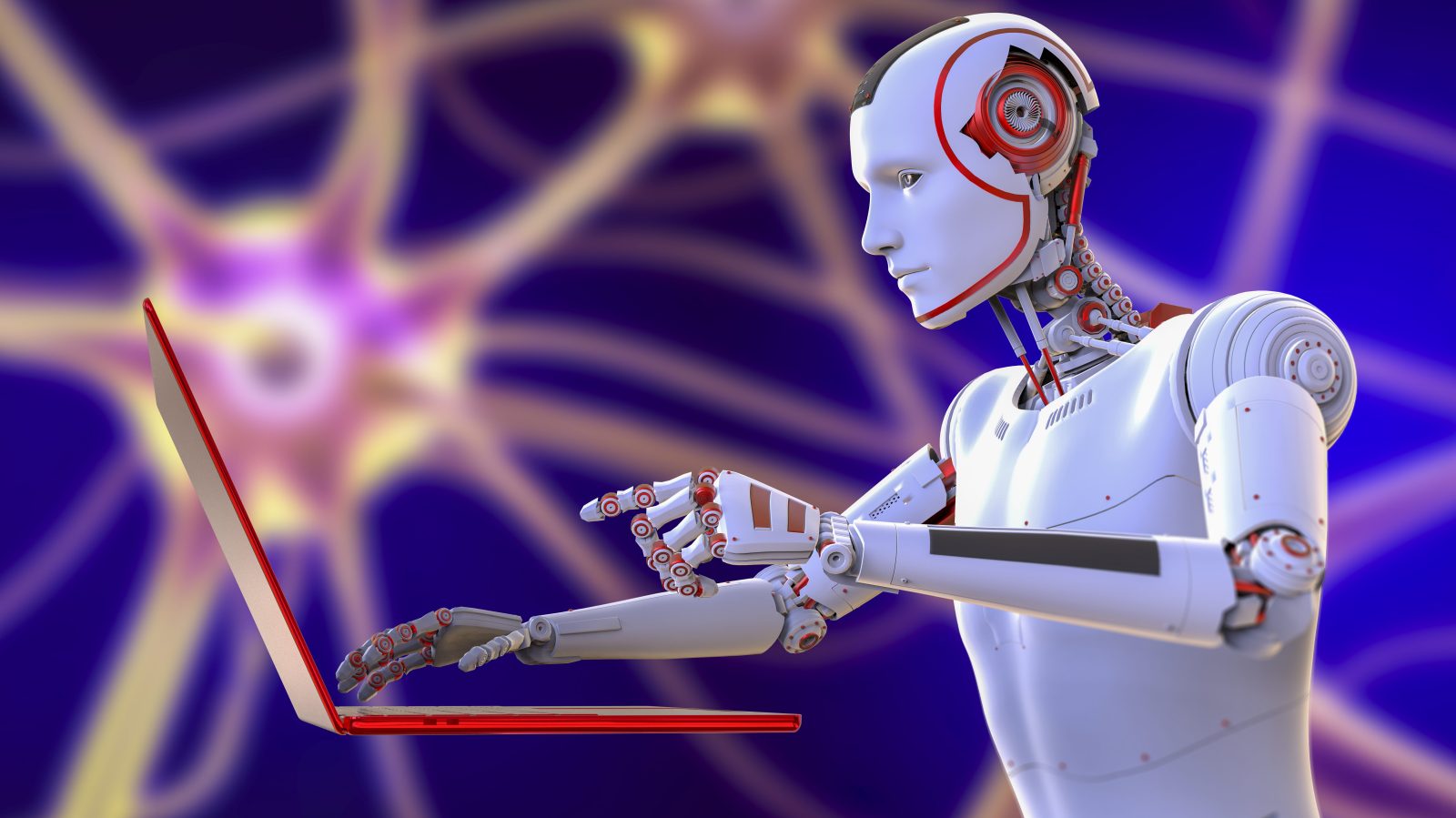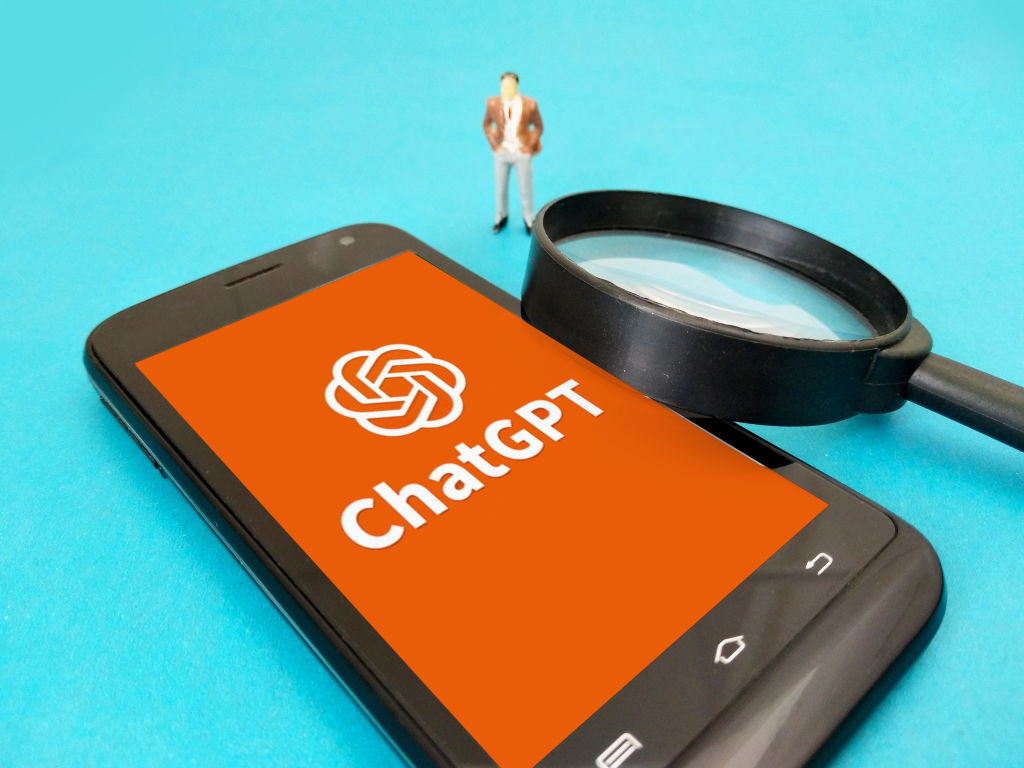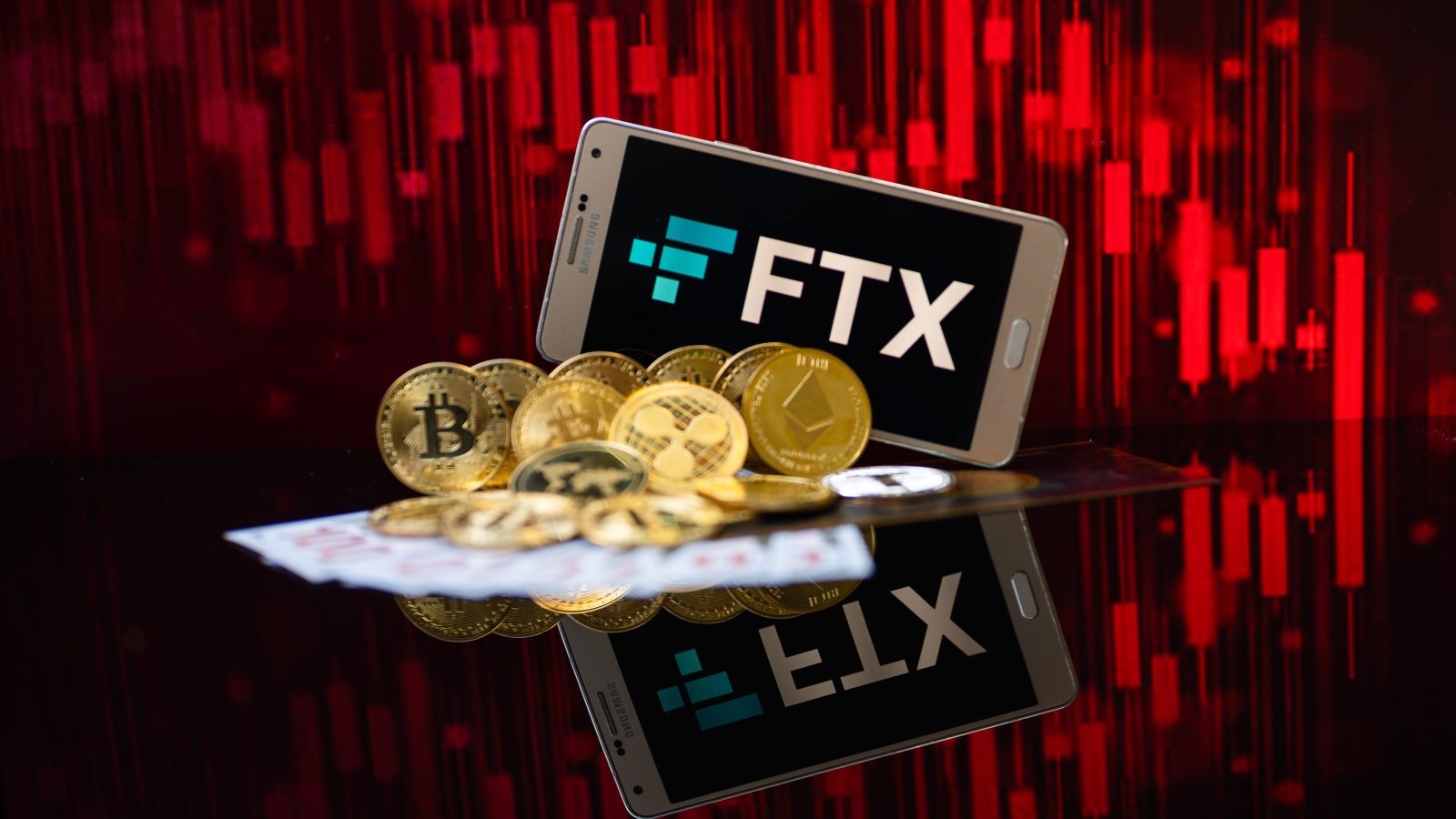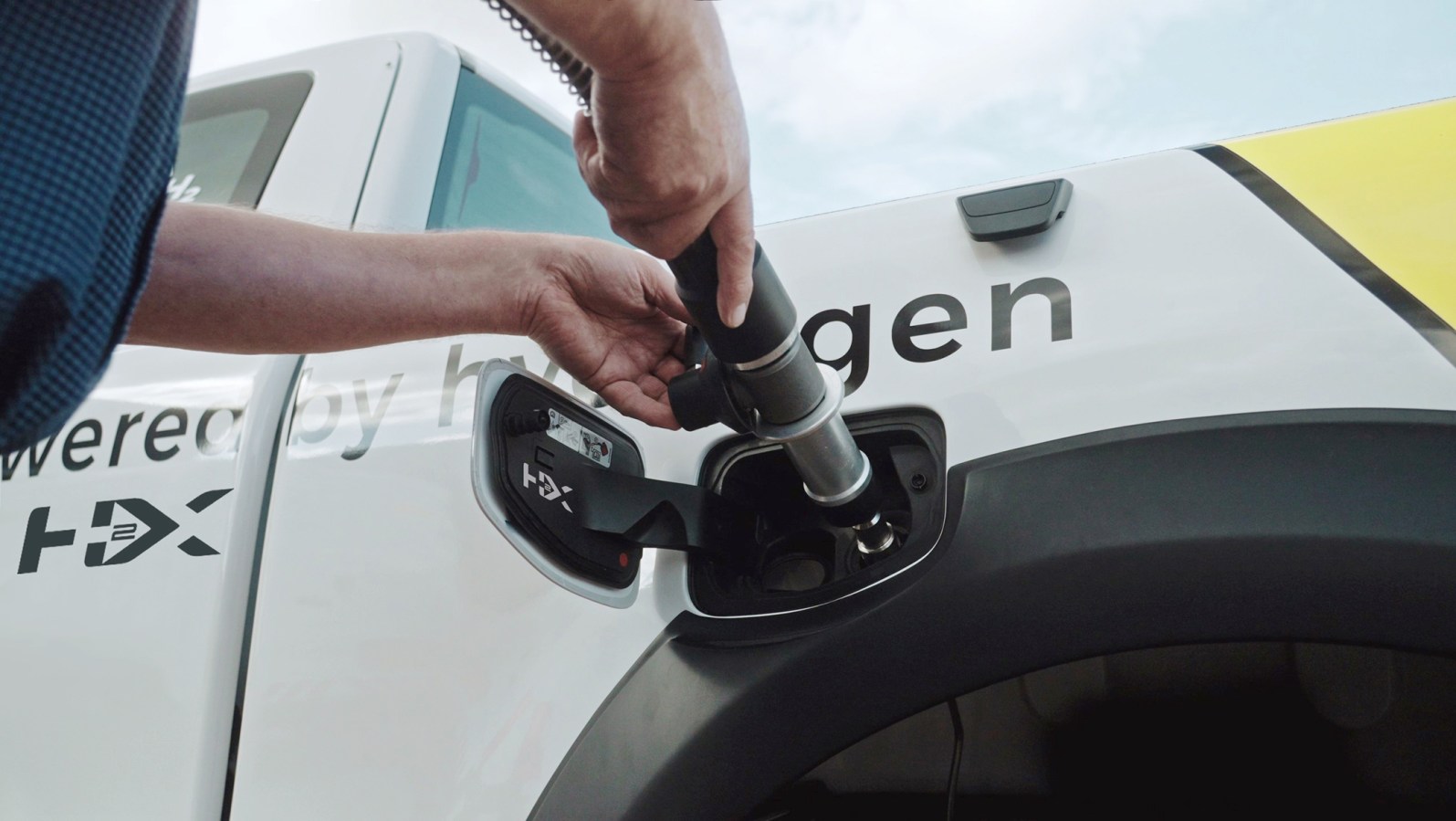Forbes spoke to OpenAI’s Sam Altman and Greg Brockman—and more than 60 other leaders, from Bill Gates to Fei-Fei Li—about the new wave of AI hype, driven by the viral popularity of ChatGPT and Stable Diffusion.
Here’s why AI is about to change how you work, like it or not.
In an unremarkable conference room inside OpenAI’s office, insulated from the mid-January rain pelting San Francisco, company president Greg Brockman surveys the “energy levels” of the team overseeing the company’s new artificial intelligence model, ChatGPT.
“How are we doing between ‘everything’s on fire and everyone’s burned out’ to ‘everyone’s just back from the holidays and everything’s good’? What’s the spectrum?” he asks.
“I would say the holidays came at just the right time,” replies one lieutenant. That’s an understatement. Within five days of ChatGPT’s November launch, 1 million users overloaded its servers with trivia questions, poetry prompts and recipe requests. (Forbes estimates it’s now 5 million-plus.)
OpenAI quietly routed some of the load to its training supercomputer, thousands of interconnected graphics processing units (GPUs) custom-built with allies Microsoft and Nvidia, while long-term work on its following models, like the highly anticipated GPT-4, took a back seat.
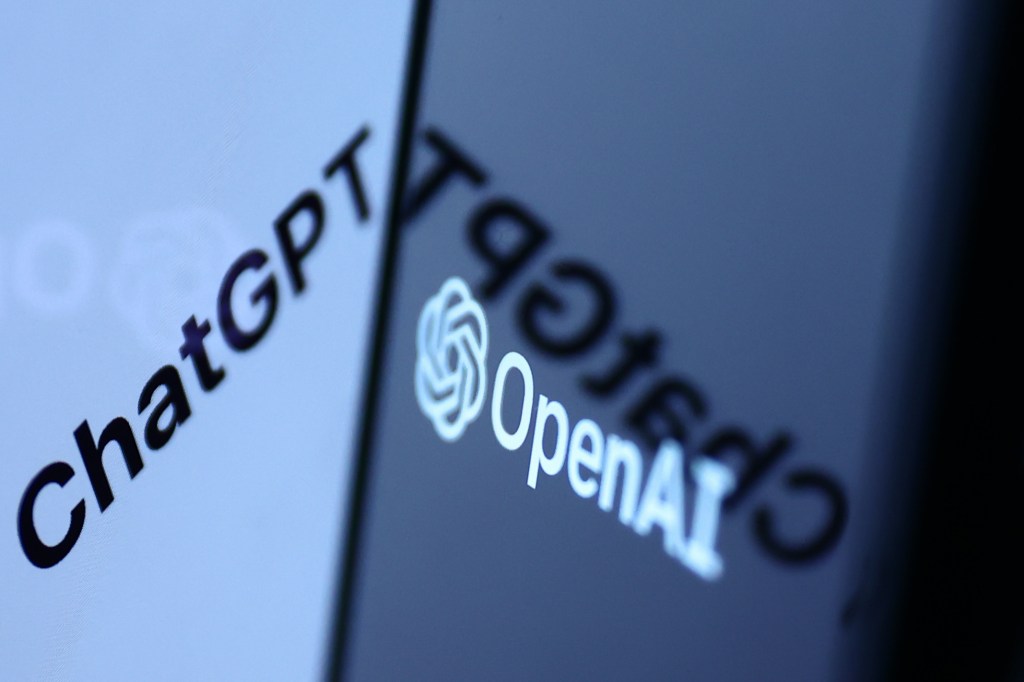
As the group huddles, ChatGPT’s at-capacity servers still turn away users. The previous day, it went down for two hours. Yet amid the fatigue, this roomful of employees, all in their 20s and early 30s, clearly relish their roles in a historic moment. “AI is going to be debated as the hottest topic of 2023. And you know what? That’s appropriate,” says Bill Gates, the person most responsible for a similar previous paradigm shift—one known as software. “This is every bit as important as the PC, as the internet.”
The markets agree. Valued at US$29 billion following a reported US$10 billion investment commitment from Microsoft, OpenAI—specifically, Brockman, 34, and his boss, CEO Sam Altman, 37—serves as the poster child for something extraordinary. But it’s hardly alone. In image generation, Amazon quietly backs Stability AI (recent value: US$1 billion), whose brash CEO, Emad Mostaque, 39, aspires to be the Amazon Web Services of the category. Hugging Face ($2 billion) supplies tools for giants like Intel and Meta to build and run competitive models themselves. Below the generative AI providers in this budding tech stack, Scale AI (US$7.3 billion) and others provide picks-and-shovels infrastructure; above them, an ecosystem of applications develops, funnelling the AI into specialized software that could fundamentally alter jobs for lawyers, salespeople, doctors—pretty much everyone.
Related
What’s the hype about?
Is there hype? Plenty. The reported valuation for OpenAI, aggressively forecasting 2023 revenue of US$200 million (compared to expected revenue of about US$30 million last year, according to part of a past investor presentation observed by Forbes), would imply a forward 145 price-to-sales multiple, compared to a more typical 10x or 20x. (OpenAI declined to comment on its financials except to say that the investment was multiyear and multibillion.)
No matter that AI insurgents aren’t pure disruptors—Amazon, Google, Microsoft, Nvidia and others already profit by providing the cloud infrastructure underpinning much of the category. Google in particular, with its enormous resources and decade-plus of machine learning research, is the “elephant in the room,” says investor Mike Volpi at Index Ventures.
Societal challenges? Those, too. There’s potential for bias and discrimination in the models, not to mention misuse by bad actors. Legal spats are emerging over the ownership of AI-generated work and the actual data used to teach them. Then there’s the ultimate goal that some, such as OpenAI’s leaders, envision: a conscious, self-improving “artificial general intelligence” that could reimagine capitalism (Altman’s hope)—or threaten humanity (others’ fear, including Elon Musk’s).
But in speaking with more than 60 researchers, investors and entrepreneurs in the category, it’s clear that this AI gold rush also has something other recent crazes have lacked: practical, even boring, business substance. The race to embed tools in company workflows, large and small, is already on. Calls to AI-based code snippets, or APIs, soared tenfold in 2022, with more acceleration in December, according to provider RapidAPI. A recent Cowen study of 100-plus enterprise software buyers found that AI has emerged as the top spending priority among emerging technologies. ChatGPT and OpenAI’s models are coming to Microsoft’s massive-footprint suite of products such as Outlook and Word, with most business software makers poised to follow suit quickly.
A quarter-century after IBM’s Deep Blue program defeated chess grandmaster Garry Kasparov, the shift to artificial intelligence is finally here. “It’s an exciting time,” the press-shy Altman tells Forbes, “but my hope is that it’s still extremely early.”
New York City’s public school system banned ChatGPT, and a Wharton professor who tested the program gave it a “B” on his final exam.
This AI tipping point also has roots in London, the headquarters for Mostaque’s Stability. In August, hot on the heels of the beta launch of OpenAI’s image model, DALL-E, Mostaque released Stable Diffusion, which allows anyone to instantly spin a line of text into a piece of art, or turn a dull selfie into a dramatic self-portrait. Unlike OpenAI’s proprietary model, Stability doesn’t own Stable Diffusion, which is open-source. But it’s become the biggest driving force and profit maker behind the project so far. On any given day, 10 million people use Stable Diffusion—more than any other model.

Such rapid adoption proved a turning point. Previously, AI had existed in three realms. The first was academic: A seminal paper demonstrating the power of neural networks, a key underpinning of GPT and other large language models (so named because they can scan, translate and generate text) was published more than a decade ago. The second was demonstrative: Deep Blue created an arms race of stunts, with Alphabet’s DeepMind unit ultimately creating juggernauts in chess and the ancient board game Go. The third was incremental: apps like Gmail, which works without AI, but is better with features such as autocomplete.
What none of these had was the magic of playing with the technology firsthand that made Stability such a breakthrough. Its overnight virality was enough for investors to offer the company a US$1 billion valuation and more than US$100 million of funding in August, within two weeks of its launch—off virtually no revenue.
AI’s potential impact needs to be debated now: “It’s like an invasive species. We will need policymaking at the speed of technology.”
Now, generative AI has exploded. Electronic music group the Chainsmokers used Stable Diffusion to render a recent music video, and Mostaque predicts it’ll soon be used to generate entire movies. The Dalí Museum in St. Petersburg, Florida, is using DALL-E to help visitors visualize their dreams, and a similar image generation tool from the startup Midjourney sparked outrage online when it was used to create a piece of art that won a top prize at the Colorado State Fair.
“I think this is a Sputnik moment,” says Stripe CEO Patrick Collison, Brockman’s former boss, who says he’s looking forward to AI tools live translating YouTube videos and grouping them by AI-identified themes.
As Stability proliferated, OpenAI had already decided to shelve ChatGPT to concentrate on domain-focused alternatives, saving the interface for a bigger later release. But by November, it had reversed course. And by January, as New York City’s public school system banned ChatGPT on its computers and a Wharton professor who tested the program gave it a “B” on his final exam, the company offered a test paid version of the tool to some users. “Stable Diffusion threw a bomb into the mix by making things dramatically more accessible,” says Sequoia investor Pat Grady, an OpenAI backer. “It really lit a fire under OpenAI and got them to become much more commercially focused.”
This, in turn, accelerated the commercial aspirations across the industry. Stability’s Mostaque gave his entire staff off during the holidays—he himself mostly slept, interrupted only by GPT-fueled panic calls from headmasters of top U.K. schools—with the idea that 2023 would turn gruelling as he tries to go toe to toe with not just OpenAI but the likes of Google and Meta. His message to his team: “You’re all going to die in 2023.”
‘Code Red’
The world’s biggest tech companies have accepted the challenge. At Google, hermetic founders Sergey Brin and Larry Page have reportedly returned to headquarters as part of a “code red” enacted by CEO Sundar Pichai to address ChatGPT and its ilk; at Microsoft, long-retired co-founder Gates tells Forbes he now spends about 10% of his time meeting with various teams about their product road maps.
Google should have the advantage. In 2017, Google researchers invented the “T” in GPT, publishing a paper on transformers that, by analysing the context of a word in a sentence, made large language models more practical. One of its authors, Aidan Gomez, remembers deploying the tech first to Google Translate, then to Search, Gmail and Docs. How it’s used, however, remains mostly behind the scenes—or in support of advertising products, the bulk of its sales—leaving consumers un-wowed. “I was waiting for the world to start picking this up and building with it, and it wasn’t happening,” says Gomez, who launched his own OpenAI challenger, Cohere, in 2019. “Nothing was changing.” Of the paper’s eight authors, six have left Google to start their own companies; another jumped to OpenAI.

Instead, Microsoft seems poised to become the industry leader. In 2019, Brockman and his team realized they couldn’t pay for the large-scale computing GPT would need with the money they had been able to raise as a nonprofit, including from the likes of Peter Thiel and Musk. OpenAI spun up a for-profit entity to give employees equity and take on traditional backers, and Altman came on board full-time. Microsoft CEO Satya Nadella committed US$1 billion to OpenAI at the time and guaranteed a large and growing customer base in his cloud service, Microsoft Azure.
Now, the US$10 billion Microsoft investment will translate into ChatGPT deploying across Microsoft’s Office software suite. RBC Capital Markets analyst Rishi Jaluria, who covers Microsoft, imagines a near-future “game-changer” world, in which workers convert Word documents into elegant PowerPoint presentations at the push of a button.
For years, the big data question for large enterprises has been how to turn hordes of data into revenue-generating insights, says FPV Ventures cofounder Pegah Ebrahimi, the former CIO of Morgan Stanley’s investment banking unit. Now, employees ask how they can deploy AI tools to analyse video catalogues or embed chatbots into their own products. “A lot of them have been doing that exercise in the last couple of months and have concluded that yes, it’s interesting, and there are places we could use it,” she says.
What values?
The big debate around this new AI era surrounds yet another abbreviation: “AGI,” or artificial general intelligence—a conscious, self-teaching system that could theoretically outgrow human control. Helping to develop such technology safely remains the core mission at OpenAI, its executives say. “The most important question is not going to be how to make technical progress, it’s going to be what values are in there,” Brockman says. At Stability, Mostaque scoffs at the objective as misguided: “I don’t care about AGI. . . If you want to do AGI, you can go work for OpenAI. If you want to get stuff that goes out to people, you come to us.”
OpenAI supporters like billionaire Reid Hoffman, who donated to its non-profit through his charitable foundation, claim that reaching an AGI would be a bonus, not a requirement for global benefit. Altman admits he’s been “reflecting a great deal” on whether we will recognize AGI should it arrive. He currently believes “it’s not going to be a crystal-clear moment; it’s going to be a much more gradual transition.” But researchers warn that the potential impact of AI models needs to be debated now, given that once released, they can’t be taken back. “It’s like an invasive species,” says Aviv Ovadya, a researcher at Harvard’s Centre for Internet and Society. “We will need policymaking at the speed of technology.”
Related
In the nearer term, these models, and the high-flying companies behind them, face pressing questions about the ethics of their creations. OpenAI and other players use third-party vendors to label some of their data and train their models on what’s out of bounds, forfeiting some control over their creators. A recent review of hundreds of job descriptions written using ChatGPT by Kieran Snyder, CEO of software maker Textio, found that the more tailored the prompt, the more compelling the AI output—and the more potentially biased. OpenAI’s guardrails know to keep out explicitly sexist or racist terms. But discrimination by age, disability or religion slipped through. “It’s hard to write editorial rules that filter out the numerous ways people are bigoted,” she says.
Copyright laws are another battleground. Microsoft and OpenAI are the targets of a class action alleging “piracy” of programmers’ code. (Both companies recently filed motions to dismiss the claims and declined further comment.) Stability was recently sued by Getty Images, which claims Stable Diffusion was illegally trained on millions of its proprietary photos. A company spokesperson said it was still reviewing the documents.
Even more dangerous are bad actors who could deliberately use generative AI to disseminate disinformation—say, photorealistic videos of a violent riot that never actually happened. “Trusting information is part of the foundation of democracy,” says Fei-Fei Li, the co-director of Stanford’s Institute for Human-Centred Artificial Intelligence. “That will be profoundly impacted.”
‘Stay out of Google’s way’
Who will have to answer such questions depends in part on how the fast-growing AI market takes shape. “In the ’90s we had AltaVista, Infoseek and about ten other companies that were like it, and you could feel in the moment like some or one of any of those were going to the moon,” says Benchmark partner Eric Vishria. “Now they’re all gone.”
Microsoft’s investment in OpenAI, which comes with a majority profit-sharing agreement until it has made back its investment, plus a capped share of additional profits, is unprecedented, including its promise for OpenAI to eventually return to nonprofit control. (Altman and Brockman, respectively, call that a “safety override” and “automatic circuit breaker” to keep OpenAI from concentrating power if it gets too big.) Some industry observers more wryly see the deal as a near-acquisition or at least a rental, that benefits Nadella the most. “Every time we’ve gone to them to say, ‘Hey, we need to do this weird thing that you’re probably going to hate,’ they’ve said, ‘That’s awesome,’” Altman says of the arrangement. (Microsoft declined to discuss the deal’s terms.)
There’s another under-discussed aspect of this deal: OpenAI could gain access to vast new stores of data from Microsoft’s Office suite—crucial as AI models mine the internet’s available documents to exhaustion. Google, of course, already has such a treasure trove. Its massive AI divisions have worked with it for years, mostly to protect its own businesses. A bevy of fast-tracked AI releases are now expected for 2023.
At Stability, Mostaque takes great pains to explain his business as focused on the creative industry, more like Disney and Netflix—above all, staying out of Google’s way. “They’ve got more GPUs than you, they’ve got more talent than you, they’ve got more data than you,” he says. But Mostaque has made his own potential Faustian bargain—with Amazon. A partnership with Stability saw the cloud leader provide more than 4,000 Nvidia AI chips for Stability to assemble one of the world’s largest supercomputers. Mostaque says that a year ago, Stability had just 32 such GPUs.
“They cut us an incredibly attractive deal,” he says. For a good reason: The synergy provides an obvious cash cow from cloud computing run on Amazon Web Services and could generate content for its Studios entertainment arm. But beyond that, Amazon’s play is an open question.
Don’t forget Apple and Facebook parent Meta, which have large AI units, too. Apple recently released an update that integrates Stable Diffusion directly into its latest operating systems. At Meta, chief AI scientist Yann LeCun griped to reporters, and over Twitter, about ChatGPT buzz. Then there are the many startups looking to build all around, and against, OpenAI, Stability and their kind. Clem Delangue, the 34-year-old CEO of Hugging Face, which hosts the Stable Diffusion open-source model, envisions a Rebel Alliance of sorts, a diverse AI ecosystem less dependent on any Big Tech player. Otherwise, Delangue argues, the costs of such models lack transparency and will rely on Big Tech subsidies to remain viable. “It’s cloud money laundering,” he says.
Existing startup players like Jasper, an AI-based copywriter that built tools on top of GPT and generated an estimated US$75 million in revenue last year, are scrambling to keep above the wave. The company has already refocused away from individual users, some of who were paying US$100 or more a month for features now covered roughly by ChatGPT, with OpenAI’s own planned first-party applications yet to arrive. “This stuff gets broken through so quickly, it’s like nobody has an edge,” says CEO Dave Rogenmoser.
That applies to OpenAI, too, the biggest prize and the biggest target in the bunch. In January, a startup founded by former OpenAI researchers called Anthropic (backed most recently by Sam Bankman-Fried of bankrupt firm FTX), released its own chatbot called Claude. The bot holds its own against ChatGPT in many respects, despite having been developed at a fraction of the cost, says Scale AI CEO Alexandr Wang, an infrastructure software provider to both. “It [raises] the question: What are the moats? I don’t think there’s a clear answer.”
At OpenAI, Brockman points to a clause in the company’s nonprofit charter that promises, should another company be close to reaching artificial general intelligence, to shut down OpenAI’s work and merge it into the competing project. “I haven’t seen anyone else adopt that,” he says. Altman, too, is unperturbed by horse race details. Can ChatGPT beat Google search? “People are totally missing the opportunity if you’re focused on yesterday’s news,” he muses. “I’m much more interested in thinking about what comes way beyond.”
This story was first published on forbes.com
